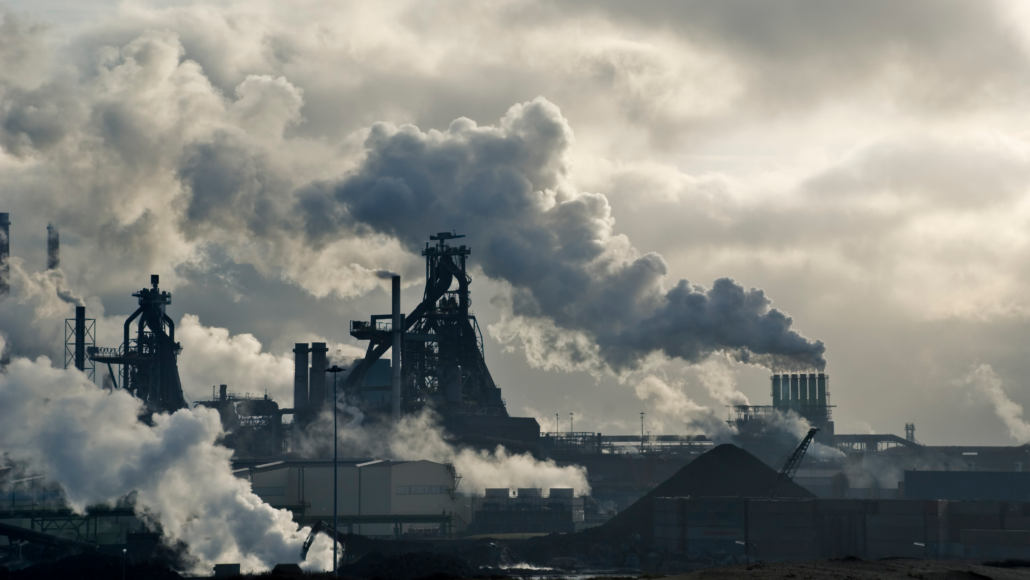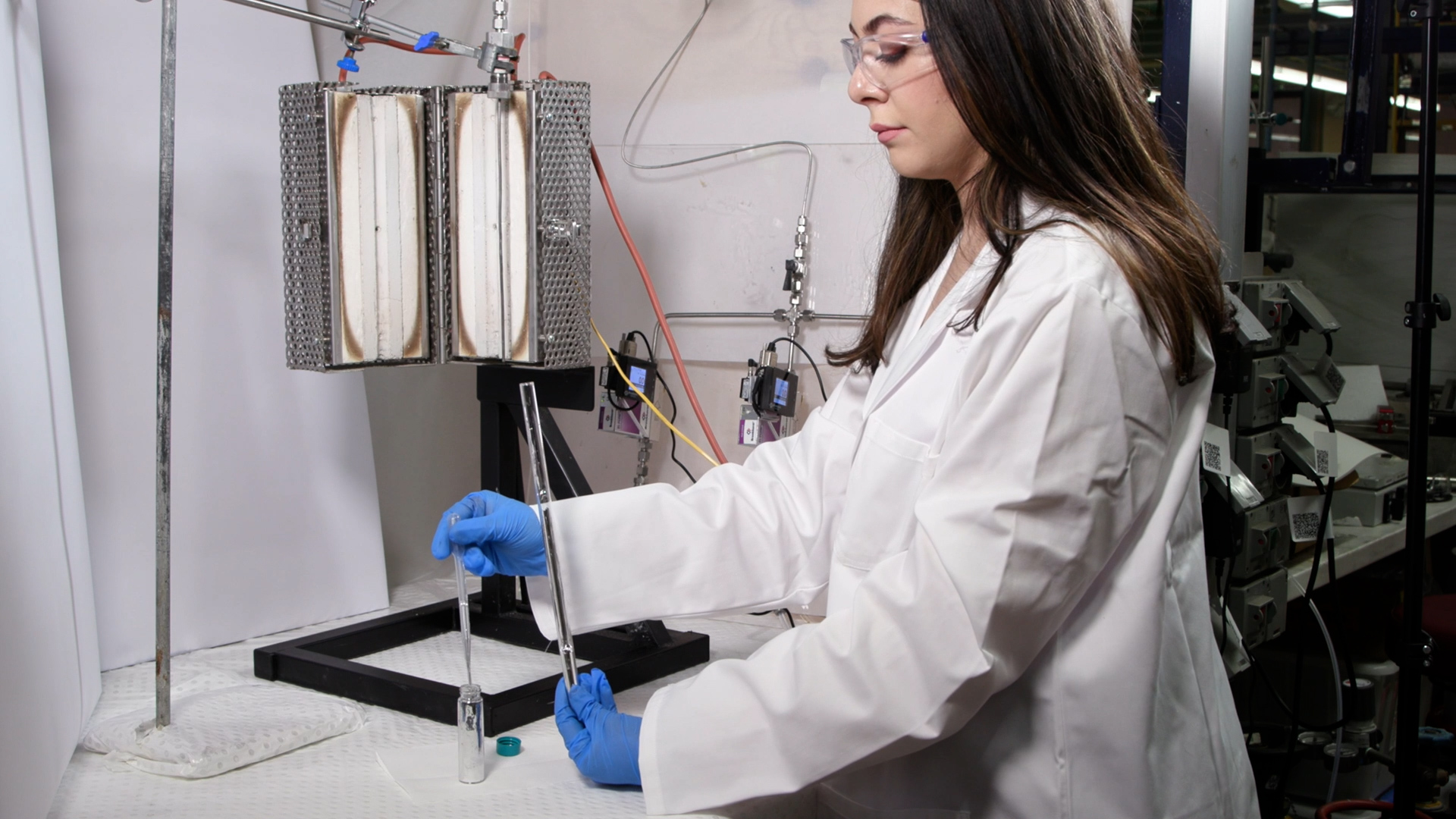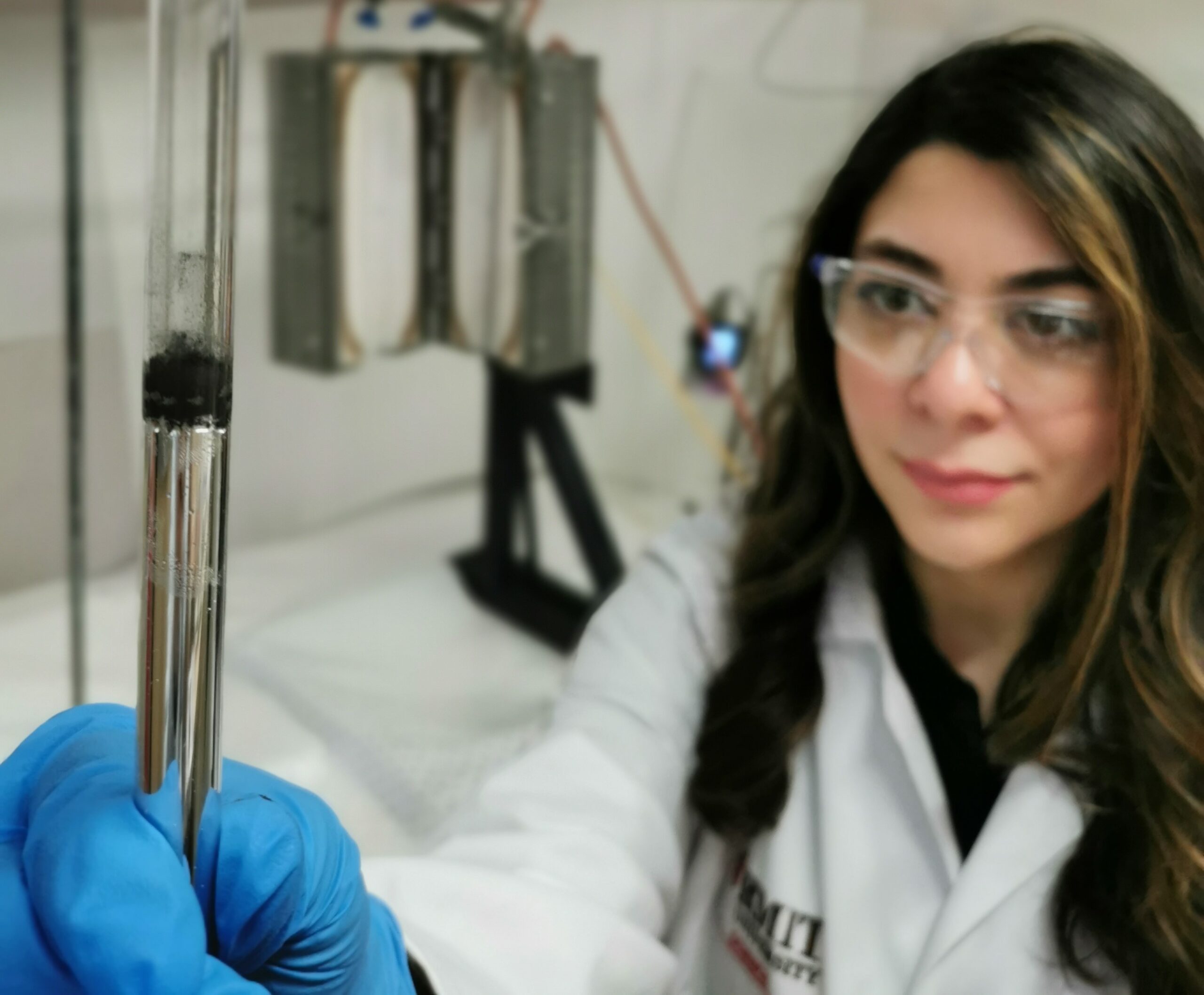New process can transform urban CO2 pollution into a resource
By creating a solid product, this process keeps the carbon dioxide, a climate menace, from escaping back into the air

Clouds of water vapor rise from smokestacks at industrial plants seen here. Not visible are the large plumes of carbon-dioxide gas also being emitted by those smokestacks. A new technology may help remove the carbon from that gas and turn it into a valuable raw material.
JacobH/E+/Getty Images Plus
Earth’s warming climate has been behind many recent bouts of extreme weather, from wildfires and floods to droughts and storms. One contributor to that warming is a growing buildup in Earth’s atmosphere of carbon dioxide, or CO2. Technologies exist to pull this gas from the air or to trap it before it gets released. Storing that captured CO2, however, has proven a challenge. Now one Australian research team offers to solve this problem by “mining” that CO2 to produce solid carbon.
One benefit: There’s no risk of that carbon later escaping into the air. What’s more, the carbon extracted from that gas can be used to make all types of products, from construction materials to batteries.
Adds Ian Power, “What is exciting about this work is that [the researchers] achieved this reaction at room temperature.” Power is an environmental geoscientist in Canada at Trent University. It’s in Peterborough, Ontario. He imagines being able “to turn planet-warming CO2 into valuable carbon-based products.” The new research, he says, “is a step towards that future.”
The Australian team described its new process January 17 in Energy & Environmental Science.
A metallic innovation
In the past, researchers have tried pumping waste CO2 deep into the Earth. But there’s been a worry that something — perhaps an earthquake, or just a bad seal — might one day release all of that pent-up gas.
Researchers at Australia’s Royal Melbourne Institute of Technology decided to investigate another idea. Torben Daeneke and Ken Chiang are chemical engineers. Daeneke’s lab works with molten metals — meaning ones that are liquid. Chiang works with catalysts. These are materials that speed up chemical reactions. Daeneke and Chiang began to wonder whether a liquid metal might serve as a catalyst to break down CO2. The two teamed up with graduate student Karma Zuraiqi to find out.
The team looked for chemical reactions that would transform the CO2. For chemicals to react, their molecules must swap some atoms. Atoms that are bonded within one molecule must separate so that they can bond with other atoms, forming new molecules. How easily atoms bond to each other depends on how tightly they hold onto their electrons.
Many metals readily give up their electrons to nonmetal atoms, such as oxygen. Because metals react so easily, they can be used to catalyze reactions. The team’s first step was to find such a metal catalyst.
The metals we encounter most often are solid at room temperature. Those won’t work well to drive chemical reactions that create a solid. After all, once that new solid forms, it would just sit on the metal. Daeneke says it’s like “chewing gum sticking to a surface.” It will slow and eventually stop the reaction. That’s why his team turned to liquid metal, he explains: “It is not possible to stick gum to a liquid surface.”

His lab had used gallium in a previous project and found it reacted with CO2. It also is liquid at room temperature. Not having to heat the metal “comes in handy when conducting experiments in the lab,” Daeneke says.
His group mixed gallium with a second liquid metal — indium — to create a mix known as an alloy. Indium has an even lower melting point. By mixing the two, the team knew there was no chance their alloy would harden during their tests.
The team filled a test tube with the alloy, then pumped CO2 through it. As bubbles of the gas rose through the alloy, bits of black carbon began to float to the top of the metal. This showed that the gallium had broken the bonds between CO2’s carbon and oxygen atoms. Those carbon atoms became solid carbon that could be skimmed easily from the top of the liquid.
The CO2’s oxygen atoms bonded to the gallium. This created a different solid. The team then ran a separate reaction to free up the oxygen — and the gallium so that it could be used again.
Making factories “green”
All the CO2 was not transformed. Still, in the short time it takes for a CO2 bubble to travel through a short tube, the process was very efficient, Daeneke says. Using longer tubes, he says, “should help us to [react] most of the CO2.”
The team tested its novel process at different temperatures. Although the reaction took place at room temperature, it sped up at temps of 200º or even 400º Celsius (392º or 752º Fahrenheit). Although those seem like high temperatures, they’re quite low for reactions like this, Daeneke notes. His team thinks industries could use waste heat from other parts of their factories to reach the needed temperature. That would allow them to pull the CO2 from their smokestacks. The exhaust they released would be carbon-free. And factories wouldn’t need to add heat to run the system.

The RMIT team anticipates that when its process is scaled up, it could make the factories that produce cement and steel “greener.” Both types now release large amounts of CO2. The team is already working on a larger model of its system to test in such factories.
But perhaps the most exciting result: The process ends up with solid carbon.
“Typically, large amounts of energy are required to break the carbon-oxygen bonds of the CO2,” says Nick Burke in Australia. He was not involved with the study, but is familiar with such topics. He heads the carbon-innovation department for the Victoria State office of Earth Resources Policy and Programs. The newly freed “solid carbon floats on the liquid metal,” Burke notes, “making [its] separation simple.” He says that makes this new alloy “unlike many existing CO2-capture technologies.”
Want to tackle global problems yourself? Daeneke advises thinking about becoming a chemical engineer. “A chemical engineer would have been involved in just about any product that you encounter in your daily life,” he says. What’s more, he adds, “It’s great fun.”
This is one in a series presenting news on technology and innovation, made possible with generous support from the Lemelson Foundation.







